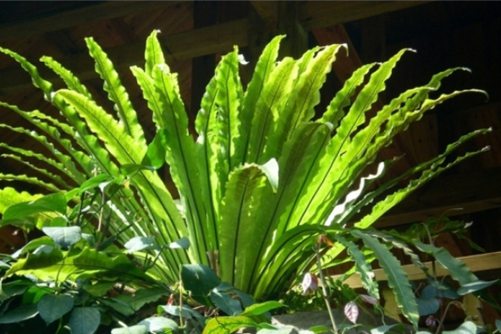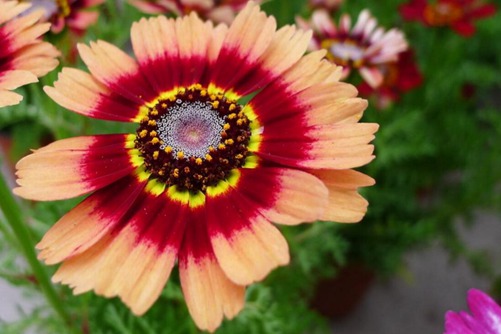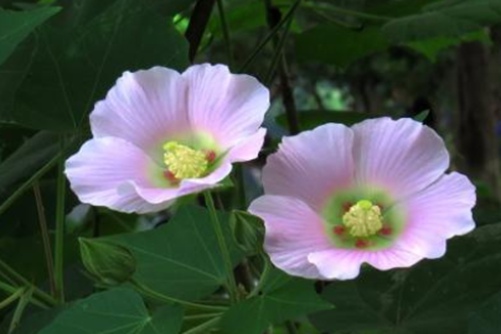How to deal with the yellowing of bird's nest fern leaves? The Bird's Nest may not be in Beijing, it may also be in your home!
Ferns were also the main source of food for dinosaurs in the environment at that time. We know that the age of dinosaurs has long been extinct, but ferns are still alive. Because the leaves of bird's nest fern are luxuriant and broad, it can absorb carbon dioxide and release oxygen through photosynthesis, so that the indoor air becomes fresh. It is an ideal indoor anion "generator" and is very suitable for display at home. Many flower friends always encounter the yellowing of bird's nest fern leaves. In this issue, Huacao Le editor will bring you how to deal with the yellowing of bird's nest fern leaves.
How to deal with the yellowing of bird's nest fern leaves? The Bird's Nest may not be in Beijing, it may also be in your home!

How to deal with the yellowing of bird's nest fern leaves?
1. Light
Lack of light or too strong light can easily lead to yellowing of bird nest fern leaves. Bird nest ferns will turn yellow if they are kept indoors for a long time, but the light should not be too strong, and too strong will also make their leaves yellow. Therefore, when breeding, it should be placed in a place with bright indoor light, not long-term concealment, and shade is needed in summer.
two。 Temperature
Improper temperature, when the temperature is too low in winter, it will make the plants of bird's nest fern frostbite and cause the leaves to turn yellow. If the temperature is too high for a long time, the leaves will turn yellow. Therefore, it is necessary to maintain the appropriate temperature during the growth period, between 15 ℃ and 28 ℃, and when the temperature is above or below this range, measures need to be taken.
3. Moisture content
Lack of water will cause the leaves of the bird's nest fern to turn yellow. when the soil is short of water or the air is relatively dry, the leaves of the bird's nest fern are prone to curl at the edges and turn yellow gradually. Too much water will also produce stagnant water in the basin soil, resulting in yellowing leaves and even rotten roots of the bird's nest fern.
4. Fertilizer application
Improper fertilization, lack of fertilizer in the bird's nest fern plant or too many times of fertilization will lead to the yellowing of the leaves of the bird's nest fern. Therefore, when potted bird nest fern is planted, it is necessary to apply fertilizer reasonably during its growth period, and stop fertilizing when it is hot in summer and low in winter.
5. Basin soil
The basin soil needs to be replaced. if the soil where the bird nest fern grows is not changed for a long time, the soil is hardened and impervious, which is easy to make its leaves yellow. So spray love bird's nest fern needs to change the basin every two years, when changing the basin can remove the old soil, and trim the roots and yellow leaves.
6. Diseases and insect pests
Bird's nest ferns turn their leaves yellow when they suffer from nematode disease or anthrax.
Conclusion:
Keep a few pots of bird's nest ferns at home, how awesome it is to take the "bird's nest" as your own!
Time: 2019-04-28 Click:
- Prev

Reason analysis and treatment of why garland chrysanthemum does not blossom
Chrysanthemum morifolium is a herb of Compositae. It gets its name because the flower has three rings of color. The flowers are rich in colors and have a long flowering period. And deeply liked by everyone, it is often arranged in flower beds or potted plants to watch. The problem of non-flowering often occurs in the process of garland chrysanthemum culture, how to deal with it?
- Next

Hibiscus flower bud does not blossom how to return a responsibility? Hibiscus, the autumn wind is not as good as you.
There are many colors of hibiscus, including white, red, and miscellaneous colors, but I alone like the delicate pink, which I call pink. The loveliness of Fanfu is not comparable to that of other flowers and trees. Since ancient times, Taoyan, Meiao, Juyin and Lan you all have their own preferences, which naturally reflects the light nature of the literati.
Related
- Fuxing push coffee new agricultural production and marketing class: lack of small-scale processing plants
- Jujube rice field leisure farm deep ploughing Yilan for five years to create a space for organic food and play
- Nongyu Farm-A trial of organic papaya for brave women with advanced technology
- Four points for attention in the prevention and control of diseases and insect pests of edible fungi
- How to add nutrient solution to Edible Fungi
- Is there any good way to control edible fungus mites?
- Open Inoculation Technology of Edible Fungi
- Is there any clever way to use fertilizer for edible fungus in winter?
- What agents are used to kill the pathogens of edible fungi in the mushroom shed?
- Rapid drying of Edible Fungi

